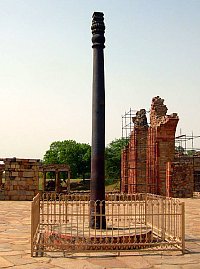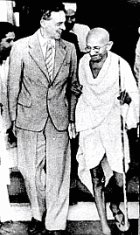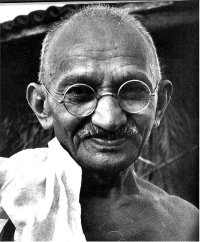|
"The Steel Industry Of India" Their History Would Eventually Define Their Future.

To understand the steel industry of India, you first need to know how it began and what gave them the relevance that they have in the world today. I am going to help you understand what India went through to get to where they are now. I think if I do, you will feel more encouraged when you do business together, that you are doing it with a country that went through hell get where they are. If you had the time to look around my sight at all, you would know that our main concern here is to educate people on anything that we feel is relevant to the subject at hand. I believe that in order to know our futures we must first understand our past. Even if that isn’t the case every time, it was for the steel industry in India. I am going to try to get in all the points and not make it too long for you so please be patient.

"The History Of India’s Steel Industry" It all started back around 400 BC when the Greek Emperors would recruit Indians for their abilities to make a steel tipped arrow. There is a lot of evidence that India knew what they were doing in the steel building department and had a handle on it as far back as at least 350-380 AD.

Wow! They were the top of the food chain when it came to steel industry, way back so what happened that caused all this greatness to cease in India. Well, after the advent of foreign rule, the leaders made it a deliberate policy not to allow anything other than raw materials to be supplied to others through trade. Without the actual manufacturing of steel, it is hard for any country to flourish or to come out of a poverty-stricken situation. Just look around and you will see that those who cannot move ahead are often just left behind. In 1830, Joshua Marshall Heath, set up a small plant at Porto Novo on Madras Coast. Heath produced forty tons of pig iron per week. However, it was too expensive for him to deal with because of the amount of charcoal it took to make a ton of steel, so he could not compete.
Then came the day that started it all off and the players were the Tata Iron And Steel Company. It was August 27, 1907 and they were formed as a venture to produce 120,000mt of pig iron. This was a big deal to say the least. By the time that India gained freedom, Tata was producing up to 1 million tons of ingot. (Please read about Tata Iron and Steel when you get a chance)
August seems to be a good month in India’s history. Not only with Tata Iron and steel but also the 9th day of Aug in 1942 which is celebrated as Quit India day. . A movement Gandhi had started to induce negotiations with the British Government. 
He wanted to try to deal with the situation in a peaceful way, first with the boycott of British goods and then the Dandi March. The British government sent Sir Stafford Cripps who is seen to the (Right) here. Gandhi made a speech in which he gave the mantra ‘Do or Die’ ‘We shall either free India or die in the attempt’. The rest as they say is history. Just Ahead by 6 years, India’s fist Industrial Policy Resolution, was adopted by the Constituents Assembly in 1948. At this point, the principles of a mixed economy were accepted. Industries were divided into four separate categories. The first strategic industries became the monopoly of the Government. The second were six industries including, coal, iron, and steel.
"Jumping A Bit Ahead" The finished steel production in India has gone up from a mere 1.1 million tonnes in 1951 to 23.37 million tonnes in 1997-98 despite overall economic slow-down in the country. The Indian steel industry finally expanded into Europe in the 21st century. India's Tata Steel offered to buy the European steel maker Corus Group PLC. Henceforth, a deal was made
This is the way it should have been from the beginning. India now runs with the big dogs. They are buying every tin can that they can get their hands on. So long as they can do so, their economy with strive and flourish. I think that they were so hungry to get back to doing what they originally did so well that they cannot and will not be stopped. So just to recap, the steel industry in India was that of a struggle up until recent times. They were forced by an oppressive thumb not to flourish for all of those years even though they had the means to do so. That is both evident when we look back as far as 400 BC and as we look at their steel industry of today. It’s a shame that anyone is held back by others when they have the means to excel. Keep it all in mind and in perspective when you try to determine what type of respect to give the people of India while you do business with their country. "The Steel Suppliers Guide" Oh, I see, you came in here to learn more about the steel mill directory of India that I have put together and not necessarily the history of their steel industry. Far be it for me to hold you back my friend. You will find it over on the Steel Suppliers Guide Page. Go on over, you can always come back here later.
|








 The British continued to try to put the Indian steel industry out of business but India continued to hold on with the help of some nationalist. America played a big role in helping India to start the industry but the war made it hard to keep the eye on the ball. After the war Indian Iron And Steel Co. was formed. They started producing pig Iron in 1922 at Burnpur.
The British continued to try to put the Indian steel industry out of business but India continued to hold on with the help of some nationalist. America played a big role in helping India to start the industry but the war made it hard to keep the eye on the ball. After the war Indian Iron And Steel Co. was formed. They started producing pig Iron in 1922 at Burnpur. 